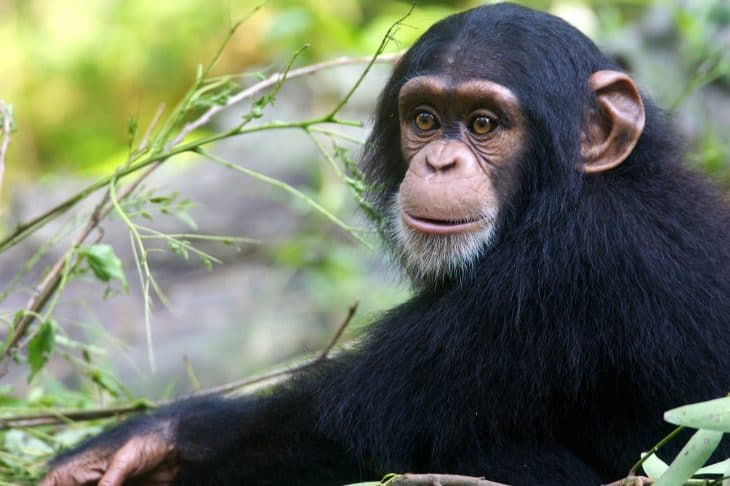
- Chimpanzees are one of our closest relatives.
- They are omnivorous, with their main diet consisting of fruits and plants. Only 2% of their diet is meat.
- The average lifespan of a chimpanzee is 50 years.
- Chimpanzees have senses similar to the five senses humans have.
- Wild chimpanzees are only found in Africa.
- Humans share around 98% of our genetic DNA with chimpanzees.
- Chimps are not monkeys. they are one of the four great apes that belong to the family of mammals.
- Chimpanzees are intelligent animals. Apart from communicating among themselves, they are able to understand human language.
- The average height of chimpanzees is 100-140cm, or 3.3-4.6ft.
- An average male chimpanzee weighs between 40kg and 60kg, while an average female chimpanzee weighs between 32kg and 47kg.
- Chimps are able to display five major personality traits that humans have. This includes extraversion, neuroticism, conscientiousness, openness, agreeableness, and the distinct trait for dominance.
- There are four roles during group hunting: the drivers, the chasers, the ambushers, and the blockers. Every chimpanzee has its own designated role.
- Female chimpanzees take part in hunting for prey, but the hunting roles are usually dominated by male chimpanzees.
- A study at Kyoto University found that chimpanzees are able to identify numbers from 1 to 9 and are aware of their values.
- Chimps also show signs of having an aptitude for photographic memory.
- The oldest recorded chimpanzee was a female, called Little Mama, who was held in captive. She lived to the age of 79 when she passed away in 2017.
- A female chimp named Washoe learned over 350 different words in sign language.
- Baby chimpanzees always stay with their mothers until they are 7 years old.
- Their hair stands on end when chimpanzees are angry or scared.
- Chimpanzees make new nests every night. Some even use more leaves in their nests to make a comfortable cushion.
Chimpanzees are endangered.
According to the IUCN Red List, chimpanzees are listed as an endangered species due to its population drastically decreasing. This population goes down mainly due to habitat loss and fragmentation. They are also being frequently caught illegally by poachers which harm them. Illegal snare hunting is the leading cause of death among chimps in Uganda.
They are incredibly strong.
A chimp the size of a human is said to be four times stronger. They are also fast and can move up to speeds of 25mph when running. Their arms are also equipped with higher proportions of fast-twitch muscle fibers. Scientists believe that this might be what gives them their incredible strength.
Chimpanzees are highly adaptable.
Chimps are typically found in tropical rainforests and densely vegetated environments. However, they can also survive in dry savannas and rainforests with altitudes over 3000m.
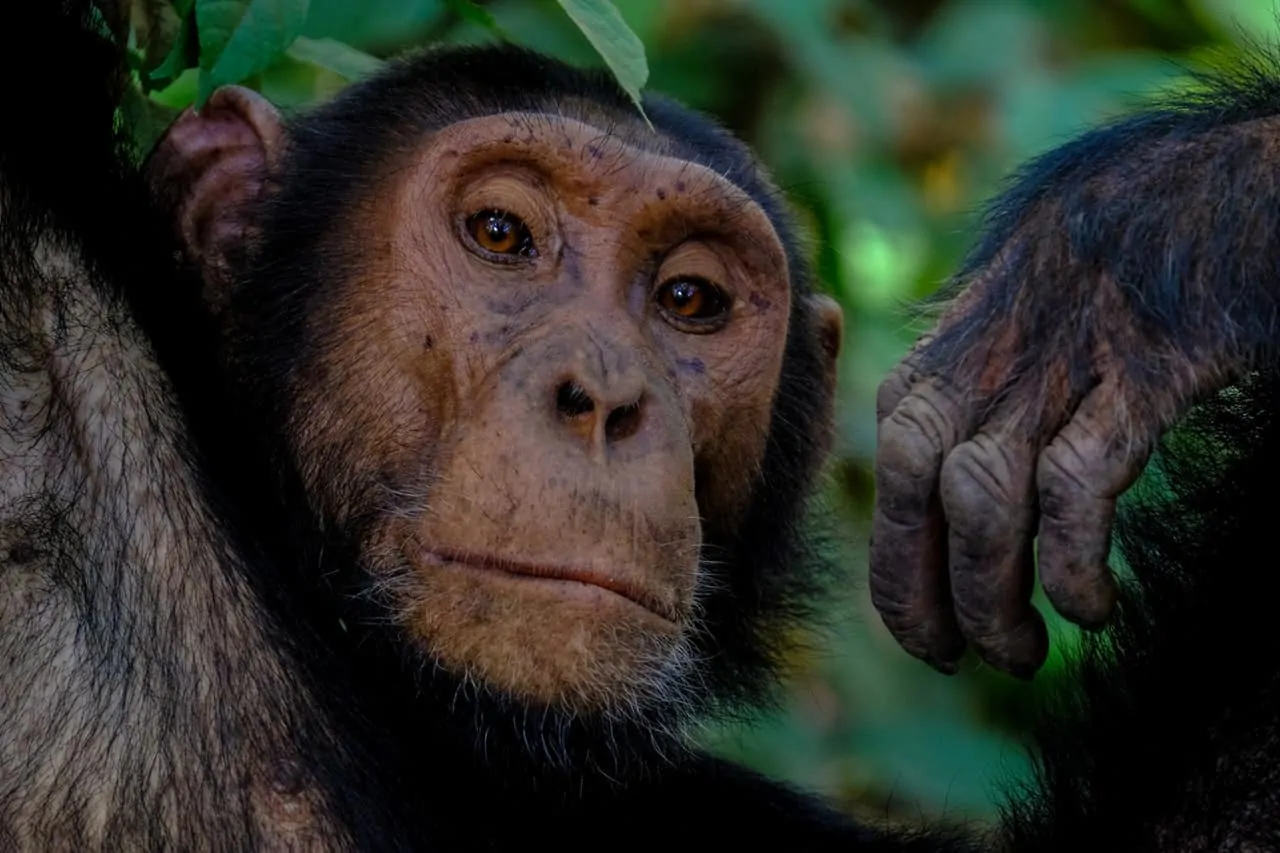
Chimpanzees are bipedal.
Normally, chimps get around by swinging around with their long arms. However, at times they may also walk on all fours to travel short distances. Chimps have also been known to be able to walk on only their legs if they feel the need to.
They can make over 30 different noises.
The most common noise their species make is known as the long pant-hoot. This noise is used as a long-distance call for a variety of social reasons. Research suggests that this call is more likely to attract male chimps rather than females.
Bonobos and Chimpanzees were once thought to be one species.
Here’s one of our chimpanzee facts that we’re sure you didn’t know about. It was once suspected that bonobos were a subspecies of chimpanzees since they are both found in sub-Saharan Africa. However, after finding out that they live in two different environments, they are now considered as two different species.
There is a parasite that makes chimps attracted to the smell of urine.
The Toxoplasma Gondii is a single-cell cat parasite that infects a wide range of mammals and birds. This parasite forms a cyst in the brains of its hosts. The only way for the parasite to complete its cycle is by being eaten by a feline. As such, the side effects of the brain cysts make the chimpanzees attracted to the urine of leopards which ultimately gets them killed.
They can be aggressive.
Some chimps have been found to group together and harm other chimps. Research suggests that this is mainly how the males of a group establish dominance in their tribes. Serious and fatal injuries towards humans have also been recorded in recent history. Several reports also state that chimps have stolen and eaten their young children and babies.
They are capable of using tools.
Chimps are one of the few animals that can use tools. Some chimps make use of sticks to retrieve insects from their mounds and eat them. They have also been found to use stones to open foods such as nuts or shelled foods. They also know how to use leaves to scoop up drinking water.
Female chimps have an estrous cycle.
By the time a chimp reaches the age of 13, females will have already reached reproductive maturity. At this stage, they are able to give birth at any given time of the year. When they are in peak fertile stage, their bottoms will swell and be a pink color to signal the males. Usually, only one infant is born per pregnancy.
Chimpanzees live in social groups.
Chimpanzees are very social apes and live in fission-fusion societies. Most of their time is spent on smaller and temporary groups known as ‘parties’. Some communities may consist of over 100 chimps with a strict hierarchy.
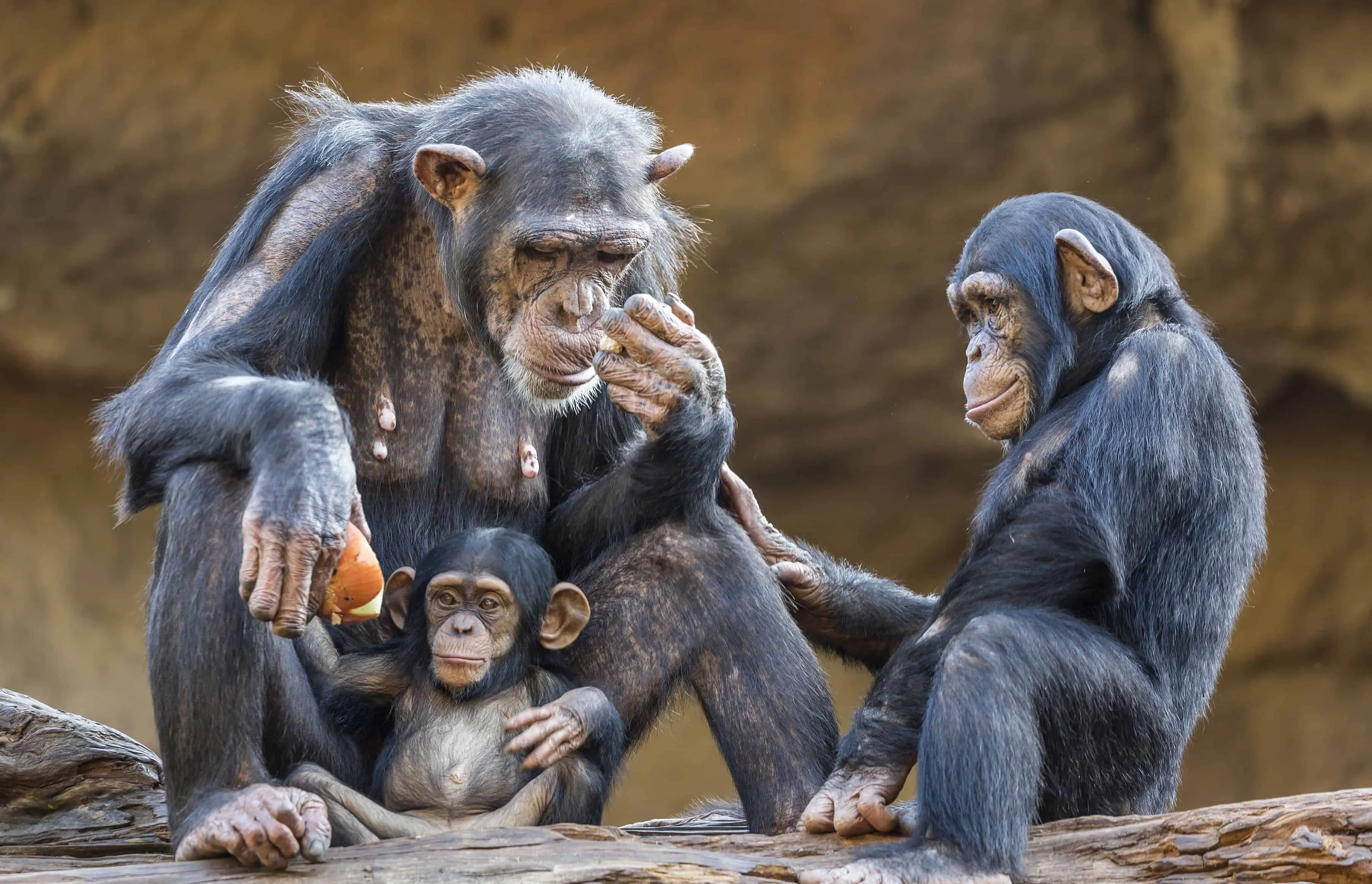
Chimpanzees can empathize.
Chimps have been observed to connect with unfamiliar individuals or species. Research has shown that chimps are capable of flexible empathy just like humans are.
Female chimps will have an average of 3 infants in their lifetime.
While giving birth to twins is possible, it is considered a rare occurrence. Female chimps will only give birth once every 3 years or so.
Chimps can be infected with the same illnesses as humans.
Diseases such as Ebola have been known to spread among gorillas and chimps in Central Africa. They may also catch the common cold and other infections such as HIV and AIDS. Now that’s some scary chimpanzee facts.
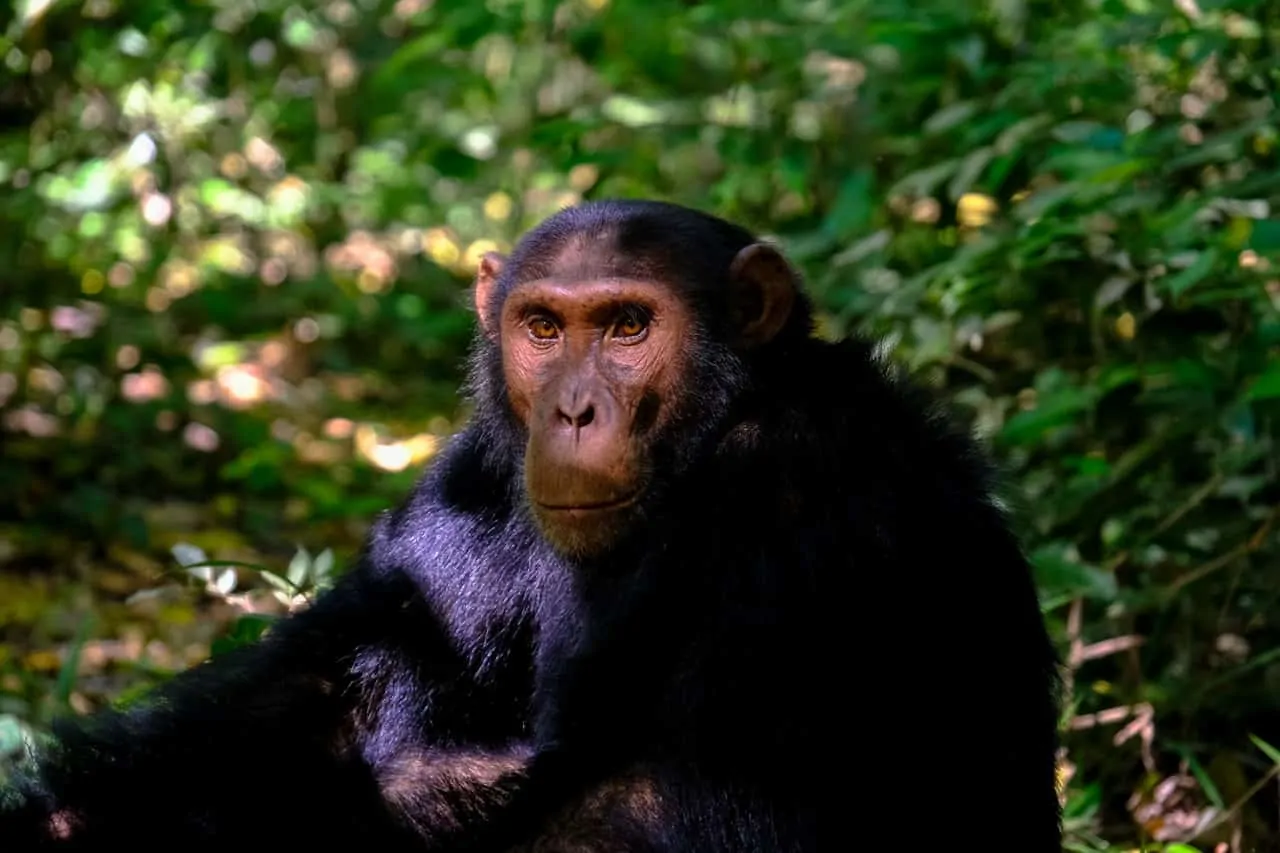
Grooming is an important social activity for them.
Grooming is a common ritual among apes and monkeys. This activity not only gets them healthy but also reinforces social structures and bonds between parties.
Baby chimps will have a white tail tuft.
Here’s one of our cutest chimpanzee facts. The white tuft on their backs will disappear as they grow older and enter stages of adulthood.
Chimps sleep in their homemade nests in trees.
Chimps will use specific branches that come from specific tree species. Typically, they sleep for 8-9 hours a night just like humans do.
Chimps are known to play inventive games when they are bored.
Scientists have found that chimps are able to learn and create simple games like a 4-year-old child. They can play simple games like rock-paper-scissors, or invent their own.
Chimps will warn each other of incoming danger.
When one chimp warns its tribe of impending danger, their expressions are much more instinctive and intentionally produced. This will warn others to move towards safety and away from dangers such as incoming predators.
Signs of Alzheimer’s have been found in chimps.
It was believed that humans were the only creatures to get this disease. However, some research on aging chimps shows that they exhibit signs of Alzheimer’s disease. Apart from dementia, this disease could also cause physical changes in the brain.
Research suggests that chimps have traditional rituals.
Through observations, scientists have found that chimpanzees will stick to the dominant behavior of their community. Research states that these chimps may show signs of social or traditional culture.
Chimps can't swim.
Despite the fact that most of their homes are near water, they cannot swim. This is mainly due to the density of their bodies and how it is formed. Their long arms and short legs make it difficult to swim well in deep waters.
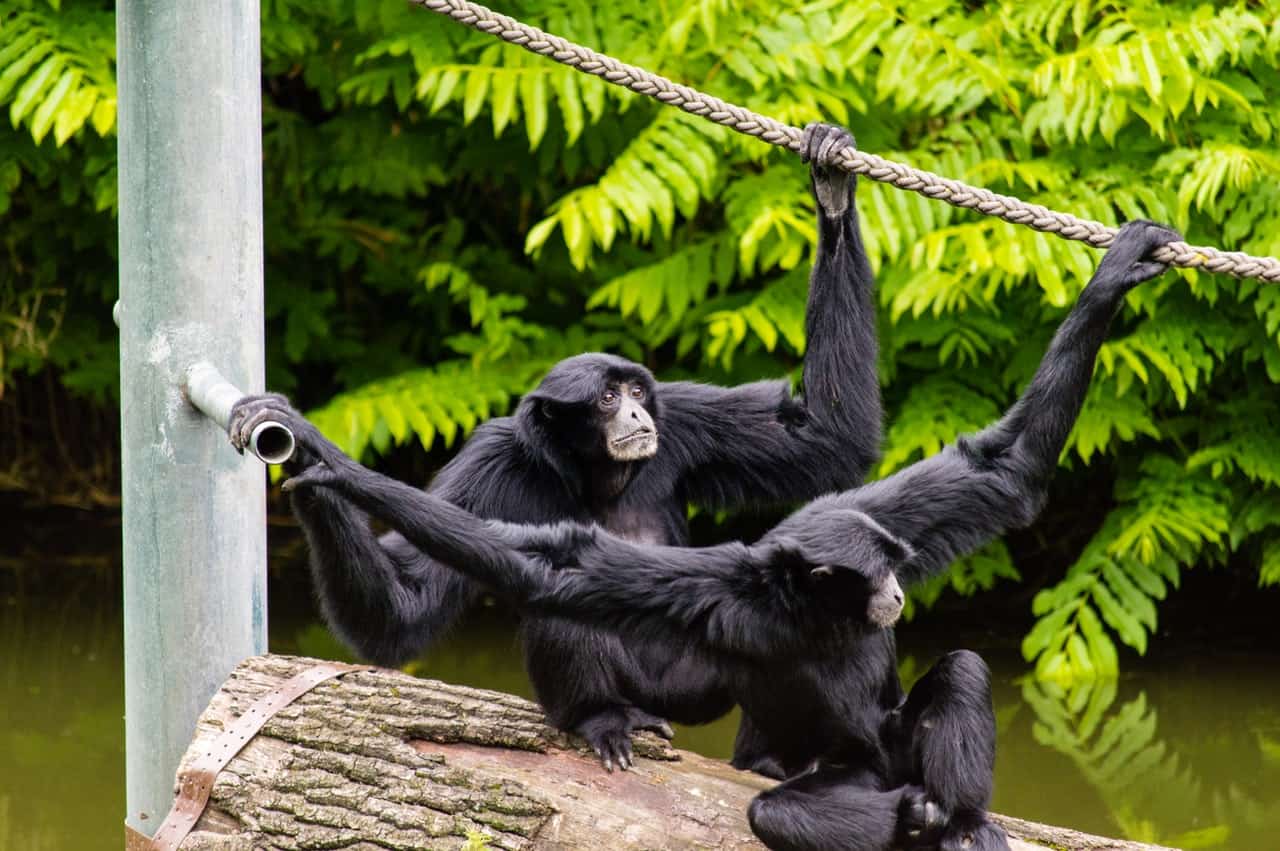
They have emotions similar to humans.
Chimpanzees are able to emotionally react to their environment the same way as humans can. They are capable of expressing feelings through actions and movements.
Chimps normally have black fur.
During their infancy, chimps will have a white tuft of hair on their backside. This disappears later on as they reach adulthood. As they grow older, some chimps fur will turn from black to gray.
In western pop culture, chimps are portrayed as clown-figures.
In the media, they are often portrayed in entertainment in circus acts or stage shows. They are shown as such mainly during their infant stage when they are most affectionate.
Some people keep chimps as pets.
Despite being illegal, many people continue to keep chimps captive as housepets. Many are against this because of the aggressive behaviors that make them dangerous to keep.
Were you surprised? We have five more chimpanzee facts for you!
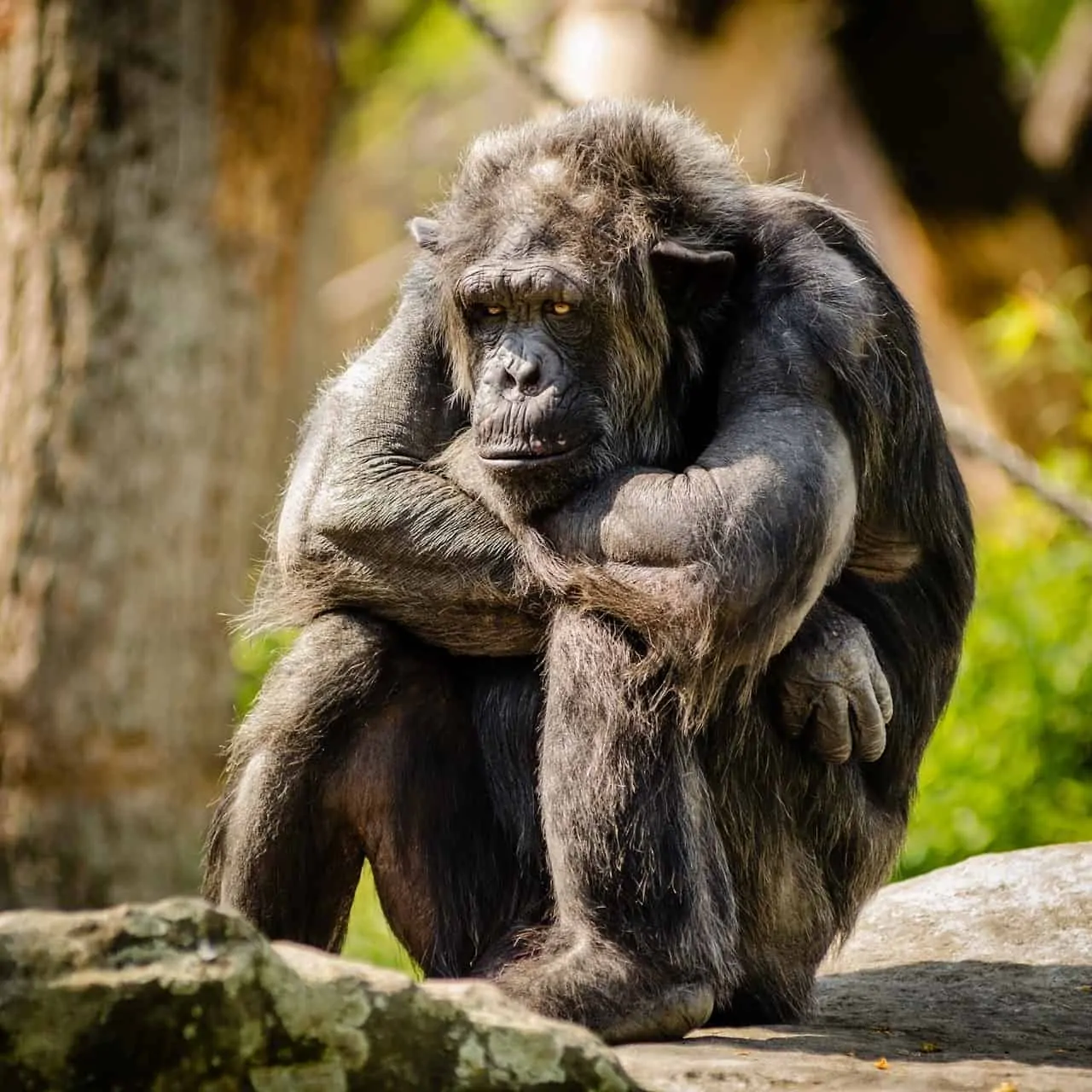
Chimpanzees are often used for laboratory research.
For years, hundreds of chimps have been kept in captivity in laboratories for the use of invasive research. They have also been one of the most common lab animals for decades.
There are four common subspecies of chimpanzees.
These include the central chimp found in Cameroon, the western chimp from the ivory coast, the Nigeria-Cameroon chimp in Nigeria and Cameroon, and lastly the Eastern chimp found in Uganda. Scientists have found a possible fifth subspecies. It is called the southeastern chimp which comes from variations of northern and southern populations of chimps found in Uganda and Burundi.
Chimps will normally hunt around interrupted or irregular forest canopies.
Chimps also hunt smaller monkeys like the red colobus. The reason why they hunt in irregular forests is so that they can use the environment to their advantage. The chimps chase the monkeys in the appropriate direction and trap them between canopies.
Cheeta from the Tarzan movies was created using more than a dozen different chimpanzees.
Depending on the talents of Cheeta required in the scenes, different chimpanzees were cast to play this role. Don’t be surprised, but close to 20 different chimpanzees had played this role, with the latest being Jiggs IV. Jiggs IV is currently residing at the C.H.E.E.T.A. (Creative Habitats and Enrichment for Endangered and Threatened Apes) Primate Sanctuary in Palm Springs, California.
Was this page helpful?
Our commitment to delivering trustworthy and engaging content is at the heart of what we do. Each fact on our site is contributed by real users like you, bringing a wealth of diverse insights and information. To ensure the highest standards of accuracy and reliability, our dedicated editors meticulously review each submission. This process guarantees that the facts we share are not only fascinating but also credible. Trust in our commitment to quality and authenticity as you explore and learn with us.
